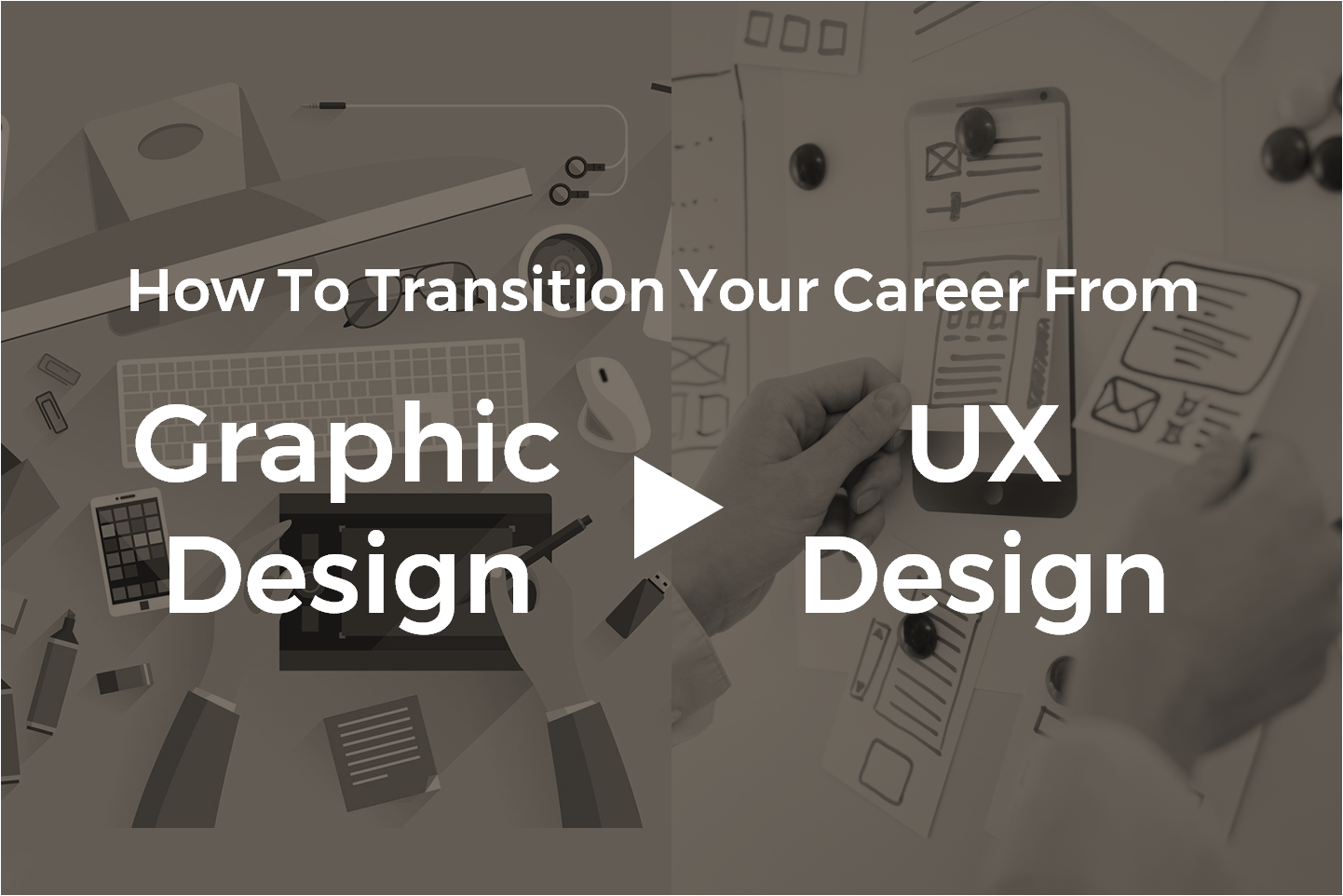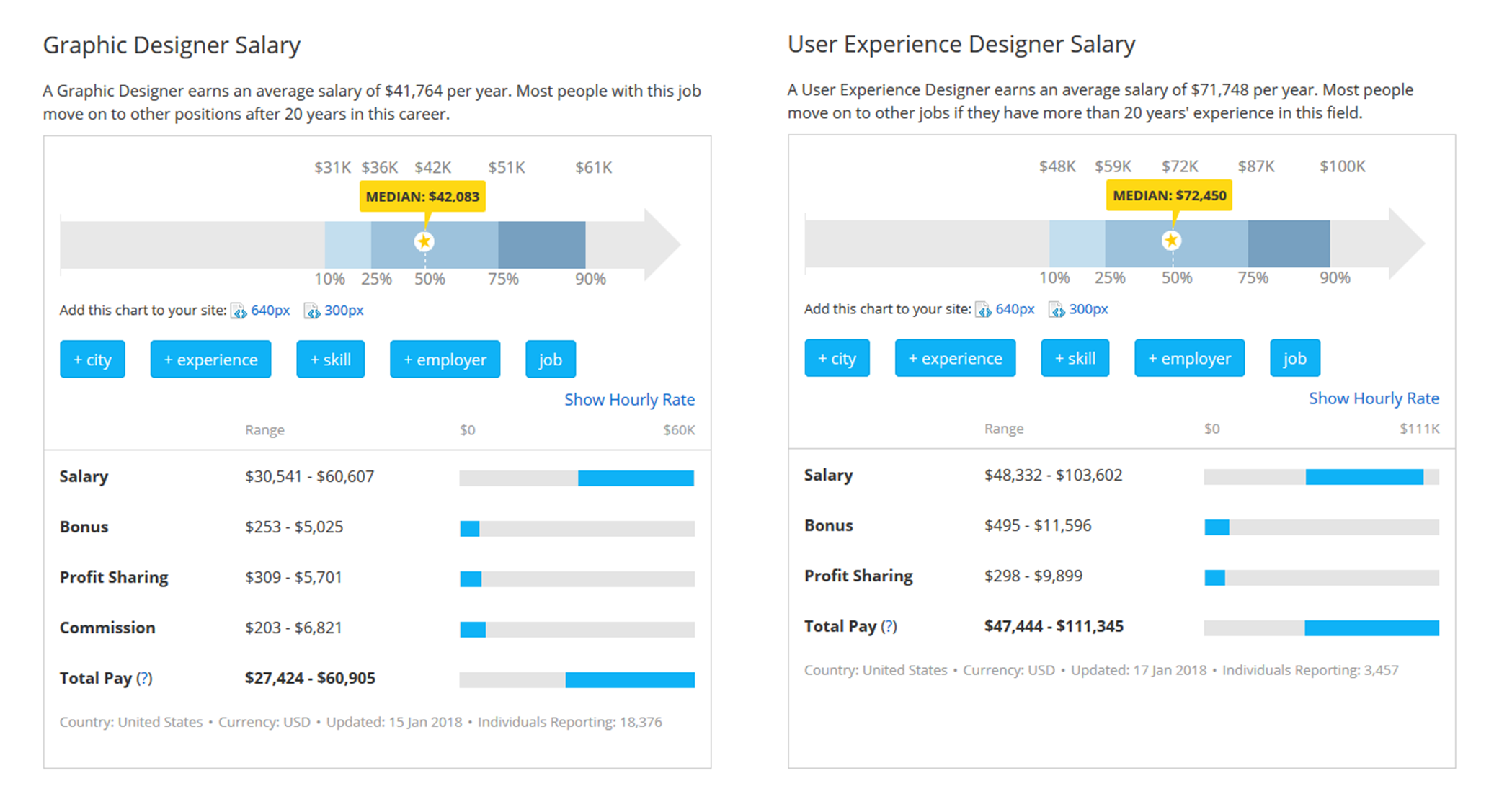How To Make A Career Change From Graphic Designer To UX Designer

Are you tired of doing endless revisions from that client whose friend didn’t like that background color or font face in your design? Maybe it’s time for a career switch!
In this article we shall go through your next career progression option that’s one of the hottest gigs out there today.
User Experience (a.k.a. UX, UI, or UED), the field is a combo of visual design, usability, and web development, with the goal of creating beautiful product experiences for users.
Switching from UX primarily begins by thinking how your designs will be consumed by users. It begins by having empathy for everything that you design. Take this instance for example, You are working on a project that requires you to design an app which will be used by people in the remote areas.
Wait before you start thinking as a UX Design, let’s first figure out why UX?- What is UX Design?
- What are the common capabilities?
- What additional capabilities you should require?
- Benefits of your current experience
- Job demand and pay for UX Designers
- How to master the skill?
- Additional career transition advice from mentors!
Many people mistakenly think that UX means a user’s experience, but it is actually about doing the process of User Experience Design.
A user’s individual experience is their conscious, subjective opinion of your app or site. User feedback is important — sometimes — but UX designers need to do a lot more than that.Doing UX:
UX Design (also sometimes called UXD) involves a process very similar to doing science: we do research to understand the users, we develop ideas to solve the users’ needs — and the needs of the business — and we build and measure those solutions in the real world to see if they work.
According to Interaction Design Foundation, UX designers tend to be concerned with, as you can see from the image below, 3 primary factors: the look of a product, the feel of that product and the usability of that product.- The look of a product is all about creating a product that has visual appeal and which, in particular, harmonizes with a user’s values and captures the spirit of what they expect in that product. In other words, it has to not only look nice, but look right too. In doing so, it establishes a bond of trust and credibility between the product and the user.
- Next is the feel, which is really about developing products that are a joy to use. That is, whether you’re interacting with them or reacting to them, products should provide a pleasurable experience and not just a functional one.
- Lastly, usability is the cornerstone of user experience. If a product isn’t usable, the experience of using it can never be good. UX designers want to create products which can, ideally, be tailored to meet a user’s specific needs, but which provides functionality that is predictable.
- Emotional Design: As a graphic designer you can invoke emotions through typography, color and images. Similarly, UX design is also concerned about emotions, shaping the emotions of the user at every stage of the user interaction with the product. In addition to focusing on the right typography and colors, UX designers are also concerned with motion design, the tone of the content, and information architecture, among others.
- Creative Thinking: Being a graphic designer, your creative quotient is higher than an average professional out there. The visual you create by adhering to conventions (and thus communicate effectively) while retaining a sense of originality (to stand out among the competition) requires some serious creative and critical thinking. Similarly, UX designers create products that solve users’ problems creatively and being innovative.
- Prototyping: Sketches, mockups and wireframes are something graphic designers often create to capture feedback from clients. Similarly, UX designers also create mockups and prototypes to test usability and experience.

- Pixel-focused vs User-focused: Pixel perfection is what Graphic Designers tend to achieve and that is what is expected out of them. On the contrary, UX designers focus primarily on users and interactions to ensure that the product meets users’ needs. To achieve this, UX designers spend a lot of time conducting research, observing users, creating user personas and stories, doing usability testing on the products, and many more. Graphic designers looking to switch career tracks will need to do a substantial amount of work finding out how to conduct user research.
- Specialized vs Multi-disciplinary: You know that graphic design is a very specialized discipline. In addition to creativity, one has to have certain level of craftsmanship, set of specialized skills and knowledge over typography, color theory etc., to produce great visuals. UX design, on the other side, is multi-disciplinary and knowledge of many fields like human psychology, interaction design, information architecture and user research techniques to name a few. Don Norman, the man who coined the term User Experience, explains that user experience covers all aspects of the person's experience with the system including industrial design graphics, the interface, the physical interaction and the manual.
- Aesthetics: Making things attractive is one of the biggest asset graphic designers can carry with them while moving into UX design. Usability and Aesthetics go hand in hand. Good aesthetics can improve the overall user experience of product by making users more relaxed, creating a positive first impression, and generally just showing that you care.
- Trends and Conventions: Design terminology, conventions and trends are something you can carry forward to your new role. You are better off than the professional with non-design background, as you can communicate in the same language with fellow designers, marketing and development team. In UX, communication is the key ingredient for the success of the product.

- Learn Human Centered Design
- Learn Prototyping
Here are 10 Online IT courses to master UX
- UX & Web Design Master Course: Strategy, Design, Development (Rated 4.5/5 by 3,696 students)
- User Experience (UX): The Ultimate Guide to Usability and UX (Rated 4.7/5 by 1,794 students)
- User Experience Design Fundamentals (Rated 4.3/5 by 3,296 students)
- User Experience Design: Complete UX Fundamentals Course (Rated 4.2/5 by 753 students)
- Introduction to User Experience Design
- Human-Centered Design: an Introduction
- User Research and Design
- Interaction Design Specialization
- UX Design for Graphic Designers
- UX Fundamentals
Like what Suzy Welch says "Your mentor doesn't need to have seniority over you." A mentor just has to do something better than you do.
Here are some of the experts who can help you achieve your career goals. They conduct a personal one–to–one session with you over Skype to discuss your profile, areas for improvement and guide you in the right direction.
- Deborah Dennis (Specialist: User Experience Design)
- Juan Elizondo (Specialist: Experience Design)
- SenthilKumar Babu (Specialist: UI Design Strategy UX, Usability, Accessibility)
- Vasu Kolla (Specialist: User experience, digital strategy, information architecture, design research)
- Shilpa Kaul (Specialist: Technical Writing and User Experience)
To graphic designers, I hope that you find my article useful and you’ll have a good start in your search for a UX design job in 2018. You can post your comments below to discuss on the points that I have highlighted in this article. Good luck!


 Robert
Robert






